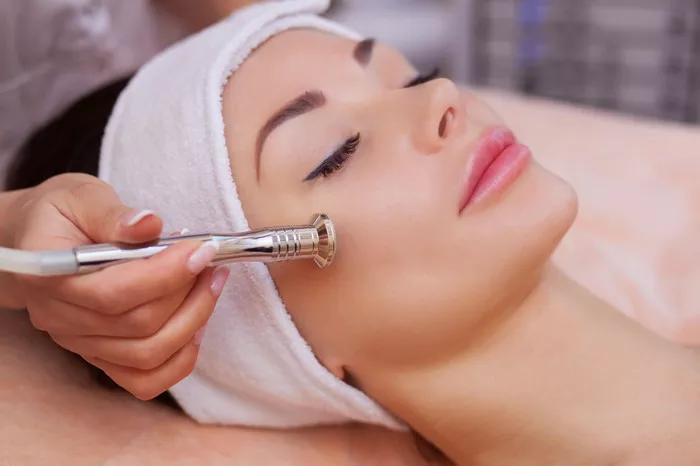Hyperpigmentation is a common skin condition that occurs when patches of skin become darker than the surrounding skin. This condition can be caused by a variety of factors, including sun exposure, hormonal changes, and certain medications. While hyperpigmentation is not harmful, it can be a source of embarrassment for some people. In this article, we will discuss the best treatment options for hyperpigmentation.
Topical Treatments
Topical treatments are often the first line of defense against hyperpigmentation. These treatments work by inhibiting the production of melanin, the pigment that gives skin its color. Some of the most common topical treatments for hyperpigmentation include:
Hydroquinone: This is a topical medication that works by inhibiting the production of melanin. It is available over-the-counter in lower concentrations and by prescription in higher concentrations.
Retinoids: These are a type of vitamin A derivative that can help to reduce hyperpigmentation by increasing cell turnover and promoting the growth of new, healthy skin cells.
Kojic acid: This is a natural ingredient that is derived from mushrooms. It works by inhibiting the production of melanin and can be found in a variety of topical treatments, including creams and serums.
Vitamin C: This is a powerful antioxidant that can help to reduce hyperpigmentation by inhibiting the production of melanin. It can be found in a variety of topical treatments, including serums and creams.
While topical treatments can be effective in reducing hyperpigmentation, they may take several weeks or months to produce noticeable results. It is important to follow the instructions provided by your healthcare provider and to be patient when using these treatments.
Chemical Peels
Chemical peels are a type of cosmetic procedure that involves applying a chemical solution to the skin to remove the outer layer of dead skin cells. This can help to reduce hyperpigmentation by promoting the growth of new, healthy skin cells. Some of the most common types of chemical peels for hyperpigmentation include:
Alpha-hydroxy acid (AHA) peels: These peels use a solution of glycolic or lactic acid to exfoliate the skin and reduce hyperpigmentation.
Beta-hydroxy acid (BHA) peels: These peels use a solution of salicylic acid to exfoliate the skin and reduce hyperpigmentation.
Trichloroacetic acid (TCA) peels: These peels use a solution of TCA to exfoliate the skin and reduce hyperpigmentation.
While chemical peels can be effective in reducing hyperpigmentation, they can also be harsh on the skin and may require several days or weeks of downtime. It is important to choose a reputable provider and to follow all post-treatment care instructions to minimize the risk of complications.
Laser Therapy
Laser therapy is a type of cosmetic procedure that uses a laser to target and destroy the cells that produce melanin. This can help to reduce hyperpigmentation by promoting the growth of new, healthy skin cells. Some of the most common types of laser therapy for hyperpigmentation include:
Intense pulsed light (IPL) therapy: This type of laser therapy uses a broad-spectrum light to target and destroy the cells that produce melanin.
Fractional laser therapy: This type of laser therapy uses a laser to create tiny wounds in the skin, which stimulates the growth of new, healthy skin cells.
While laser therapy can be effective in reducing hyperpigmentation, it can also be expensive and may require several treatments to produce noticeable results. It is important to choose a reputable provider and to follow all post-treatment care instructions to minimize the risk of complications.
Microdermabrasion
Microdermabrasion is a type of cosmetic procedure that uses a special device to exfoliate the outer layer of dead skin cells. This can help to reduce hyperpigmentation by promoting the growth of new, healthy skin cells. Some of the most common types of microdermabrasion for hyperpigmentation include:
Crystal microdermabrasion: This type of microdermabrasion uses a special device that blasts tiny crystals onto the skin to exfoliate the outer layer of dead skin cells.
Diamond-tip microdermabrasion: This type of microdermabrasion uses a special device with a diamond tip to exfoliate the outer layer of dead skin cells.
While microdermabrasion can be effective in reducing hyperpigmentation, it may require several treatments to produce noticeable results. It is important to choose a reputable provider and to follow all post-treatment care instructions to minimize the risk of complications.
Conclusion
Hyperpigmentation can be a source of embarrassment for some people, but there are a variety of treatment options available. Topical treatments, chemical peels, laser therapy, and microdermabrasion are all effective in reducing hyperpigmentation. It is important to choose a treatment option that is appropriate for your skin type and tone, and to follow all post-treatment care instructions to minimize the risk of complications. With the right treatment, you can achieve a smoother, more even skin tone and regain your confidence.


